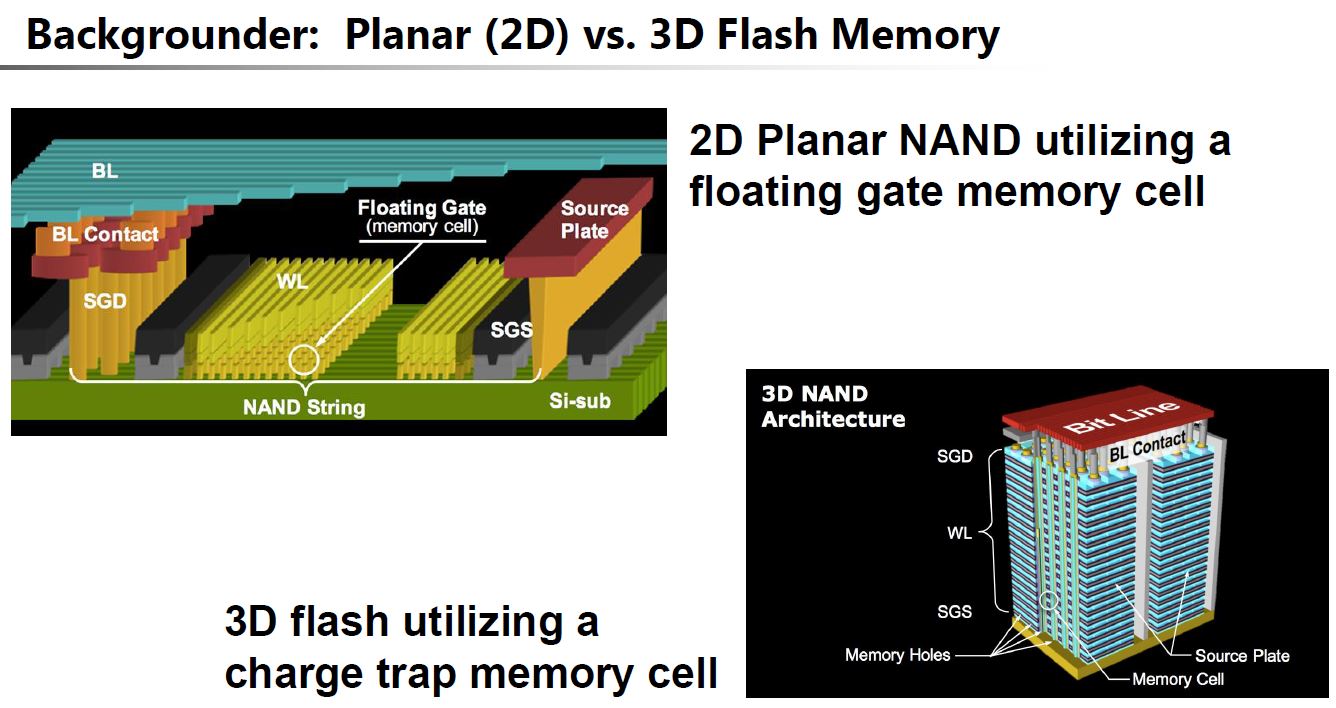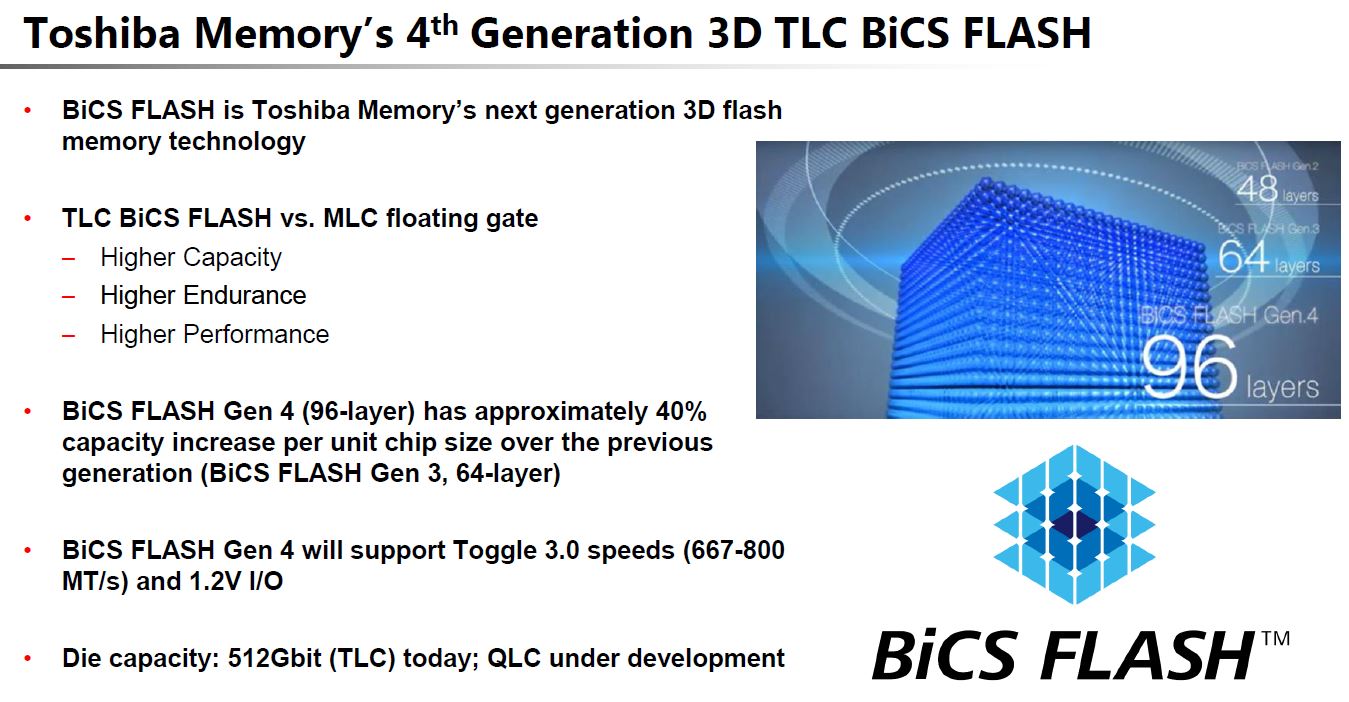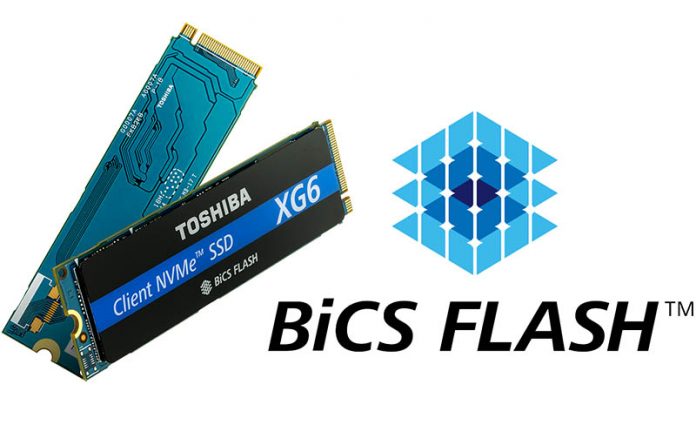Toshiba is making a few announcements ahead of Flash Memory Summit. The first announcement is their newest fourth-generation 96-layer BiCS TLC NAND. The second major announcement is that the company is announcing a product with this technology, the Toshiba XG6 NVMe SSD.
New Toshiba 96-Layer BICS TLC NAND
NAND is a fascinating space. Engineers are designing against several goalposts. One is endurance, which the industry as a whole significantly overestimated just how much endurance was needed when NAND SSDs first arrived. As capacities have gone up, the need for many drive write per day endurance has largely recessed. Additional goalposts are cost and cost per capacity. One of the biggest shifts in design recently has been the shift from Planar 2D NAND to 3D NAND. Today, if you buy a modern SSD, chances are it is using some form of 3D NAND.

Toshiba is now using a TLC BiCS flash that is a 3D NAND design. This means that it is storing 3 bits per cell for more capacity. The 3D NAND design means that it has better endurance than most 2D Planar TLC options. Capacities per die can go up which also means capacities of devices can follow suit. Form factors such as the popular M.2 2280 only have a limited amount of room onboard to place chips so physical packaging can become a constraint.

Other Toshiba innovations include that this generation will be lower power, operating at around 1.2V for the I/O instead of around 1.6V. There is also support for the newest Toggle 3.0 speeds to help with performance.
Toshiba mentions that QLC is under development and is coming. That is the next step to drive capacities up.
NAND technology is great, but most of us experience NAND in storage we purchase and use. Next, we are going to talk about the Toshiba XG6 NVMe SSD that uses the fourth generation 96-layer BiCS NAND.



